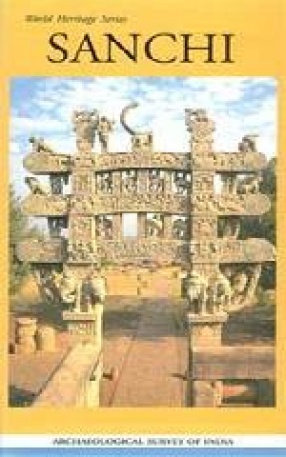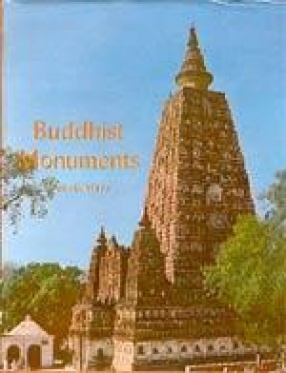This guidebook on the Buddhist monuments at Sanchi is part of the series being published by the Archaeological Survey o India on World Heritage Sites in India. Located 46 kms from Bhopal, the capital of Madhya Pradesh, Sanchi is distinguished by some remarkable specimens of Buddhist art and architecture, ranging in time from the third century BC to the twelfth century AD. Stupa 1 or the Great Stupa, crowned by a triple umbrella and four exquisitely carved gateways, was first built by the Mauryan emperor, Ashoka, and was subsequently enlarged, faced with stones and decorated with balustrades and staircases. The erection of Stupas 2 and 3 also dates to around the same time. In the first century BC, the elaborately carved gateway to Stupa 1 were built during the rule of the Satavahanas. Later, during the Gupta period, several temples were built and the site well up to the twelfth century AD. However, Sanchi faded into oblivion from the fourteenth century until it was rediscovered in 1818. Since then the monuments have been extensively excavated and conserved. Also included in this guidebook is a comprehensive section on all the information a traveler might need to make his way to Sanchi. Details of visa formalities, transportation, tourist information offices and hotels have been provided to make the traveler’s journey as comfortable as possible. Dotted with stupas, monasteries and temples, permeated with an incredible sense of tranquility and peace, the little grassy knoll at Sanchi is one of the most popular buddhist pilgrimage sites in India. Although not sanctified by a visit from the Buddha, Sanchi was where generations of Buddhist devotees, beginning with the Mauryan emperor, Asoka, expressed their devotion in stone. Drawn perhaps by the sense of tranquility at Sanchi, Emperor Asoka (c.273-236 BC), built a brick stupa – now known as Stupa 1 – and erected a pillar before it. During the Sunga period that followed, Asoka’s stupa was encased in stone and given a balustrade. The Great Stupas most distinguishing feature are into four elegant gateways, which were added in the first century BC, while the illustrious Guptas left their mark in the form of four statues of the Lord. Through the centuries, right up to the twelfth century, countless kings, monks and lay worshippers added temples, monasteries and votive stupas to make Sanchi one of Buddhism’s greatest religious centers. Visit it on an autumn evening, when the stars are beginning to come out, and feel the oneness with the Buddha.
World Heritage Series Sanchi
In stock
Free & Quick Delivery Worldwide
Bibliographic information
Title
World Heritage Series Sanchi
Author
Edition
1st ed.
Publisher
ISBN
8187780185
Length
96p., Illustrations; Maps; Figures; 21cm.
Subjects







There are no reviews yet.